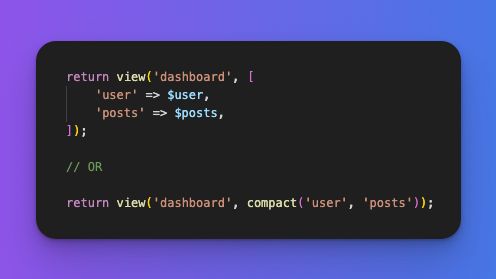
Check out the static `times` method. It creates a new collection, invoking the given closure a specified number of times.

Check out the static `times` method. It creates a new collection, invoking the given closure a specified number of times.
Did you know.... You can stream large datasets from the DB using lazy() — way more memory-efficient than get().

Did you know.... You can stream large datasets from the DB using lazy() — way more memory-efficient than get().
Did you know... You can destructure arrays directly in the right-hand part of a foreach loop!
Give it a shot for cleaner and more readable code!

Did you know... You can destructure arrays directly in the right-hand part of a foreach loop!
Give it a shot for cleaner and more readable code!
Did you know.... You can stream large datasets from the DB using lazy() — way more memory-efficient than get().

Did you know.... You can stream large datasets from the DB using lazy() — way more memory-efficient than get().

Did you know... You can destructure arrays directly in the right-hand part of a foreach loop!
Give it a shot for cleaner and more readable code!

Did you know... You can destructure arrays directly in the right-hand part of a foreach loop!
Give it a shot for cleaner and more readable code!

Did you know… you can import multiple classes from a single namespace like this👇
Way cleaner, right? 😁 x.com/laravelback...
Did you know… you can import multiple classes from a single namespace like this👇
Way cleaner, right? 😁 x.com/laravelback...


Load data faster when the targeted value is an integer. Use 𝘄𝗵𝗲𝗿𝗲𝗜𝗻𝘁𝗲𝗴𝗲𝗿𝗜𝗻𝗥𝗮𝘄() instead of the 𝘄𝗵𝗲𝗿𝗲𝗜𝗻() method to load data faster when the targeted value is an integer.

Load data faster when the targeted value is an integer. Use 𝘄𝗵𝗲𝗿𝗲𝗜𝗻𝘁𝗲𝗴𝗲𝗿𝗜𝗻𝗥𝗮𝘄() instead of the 𝘄𝗵𝗲𝗿𝗲𝗜𝗻() method to load data faster when the targeted value is an integer.











